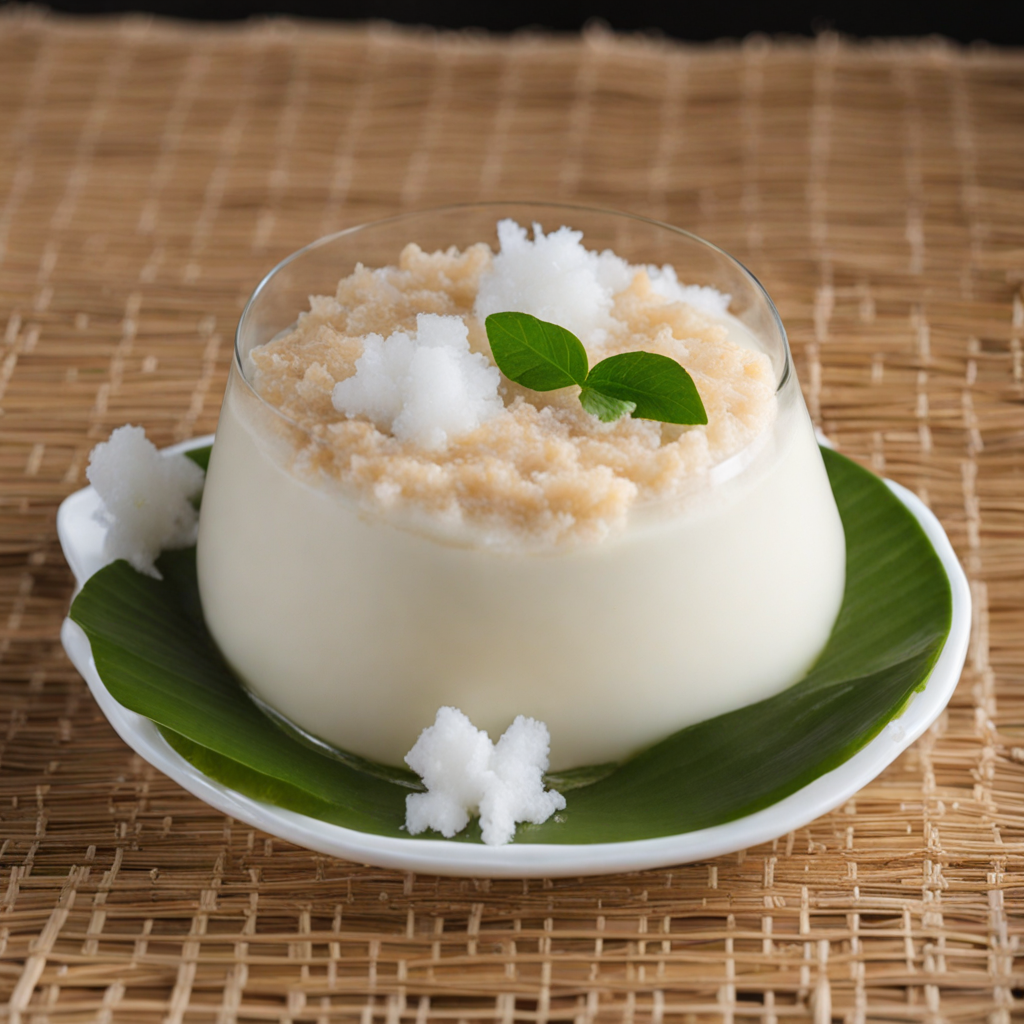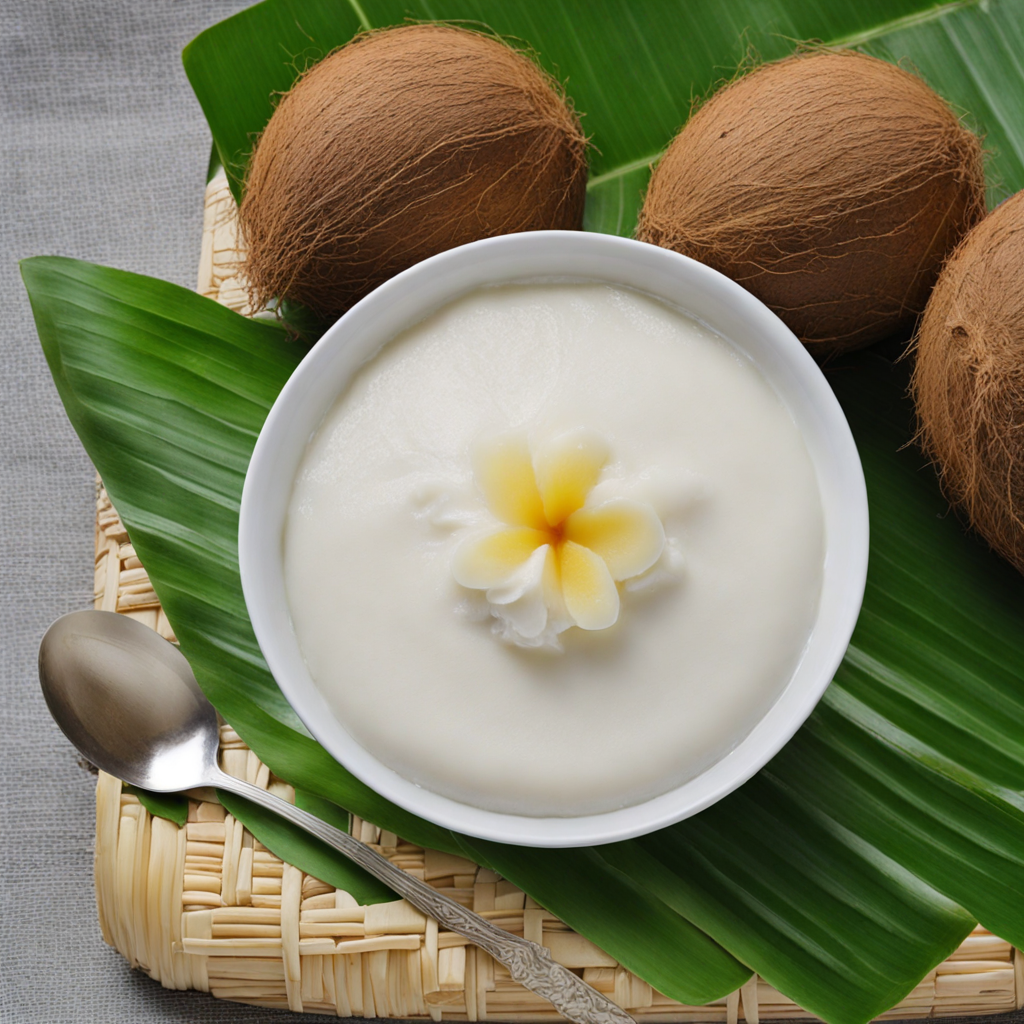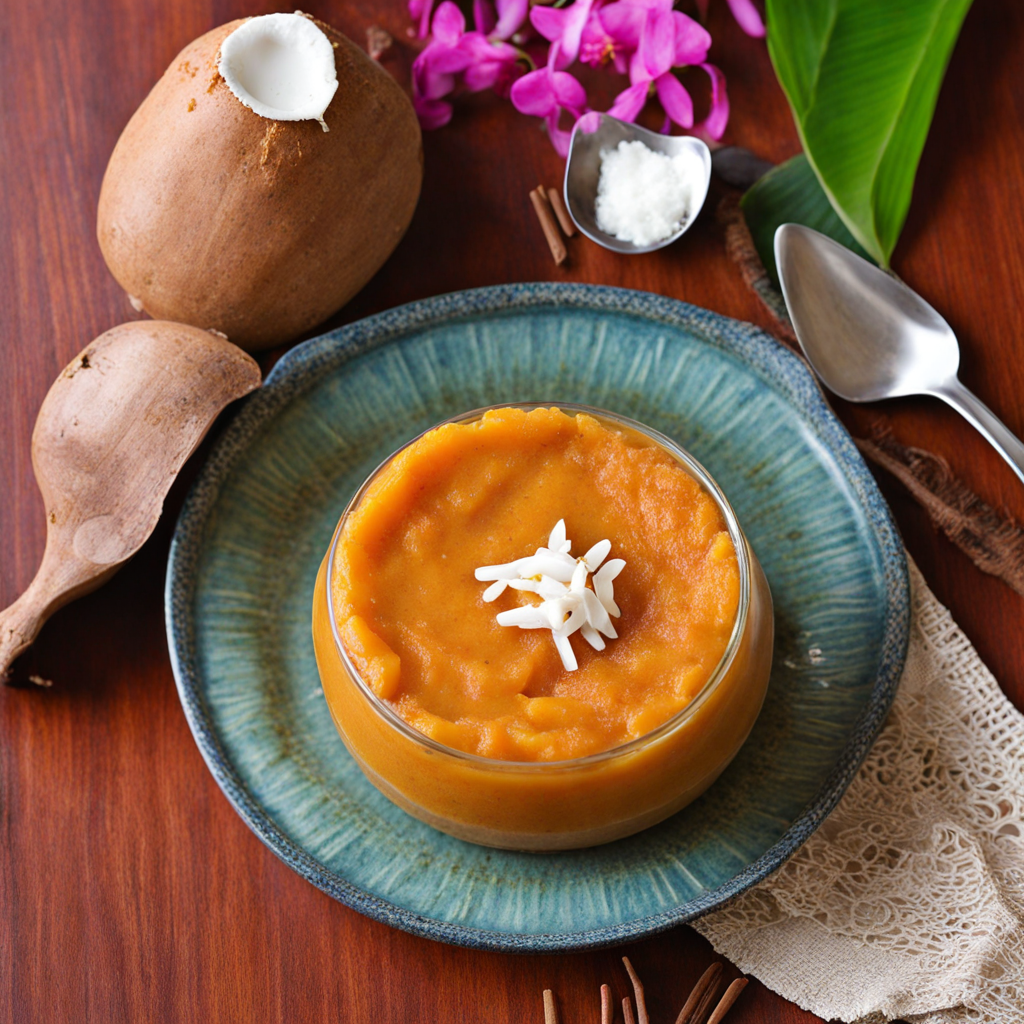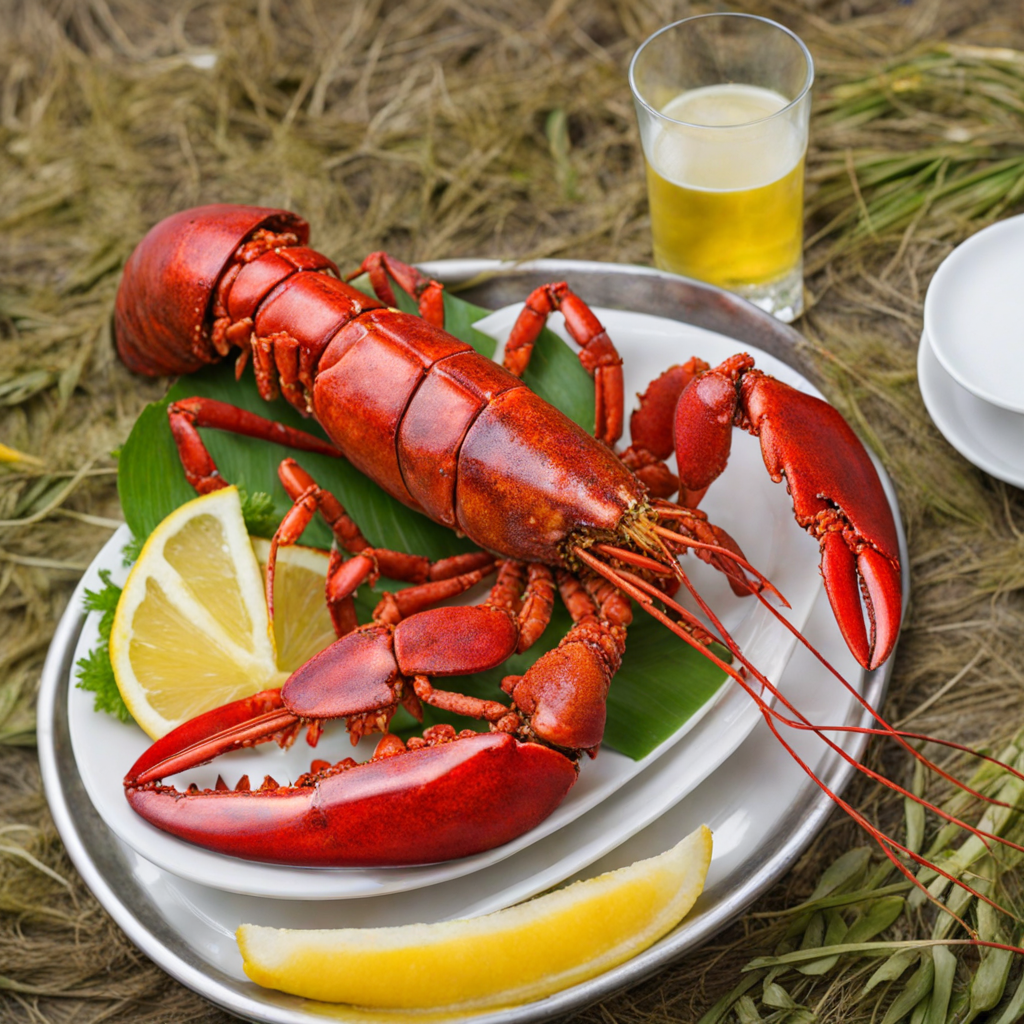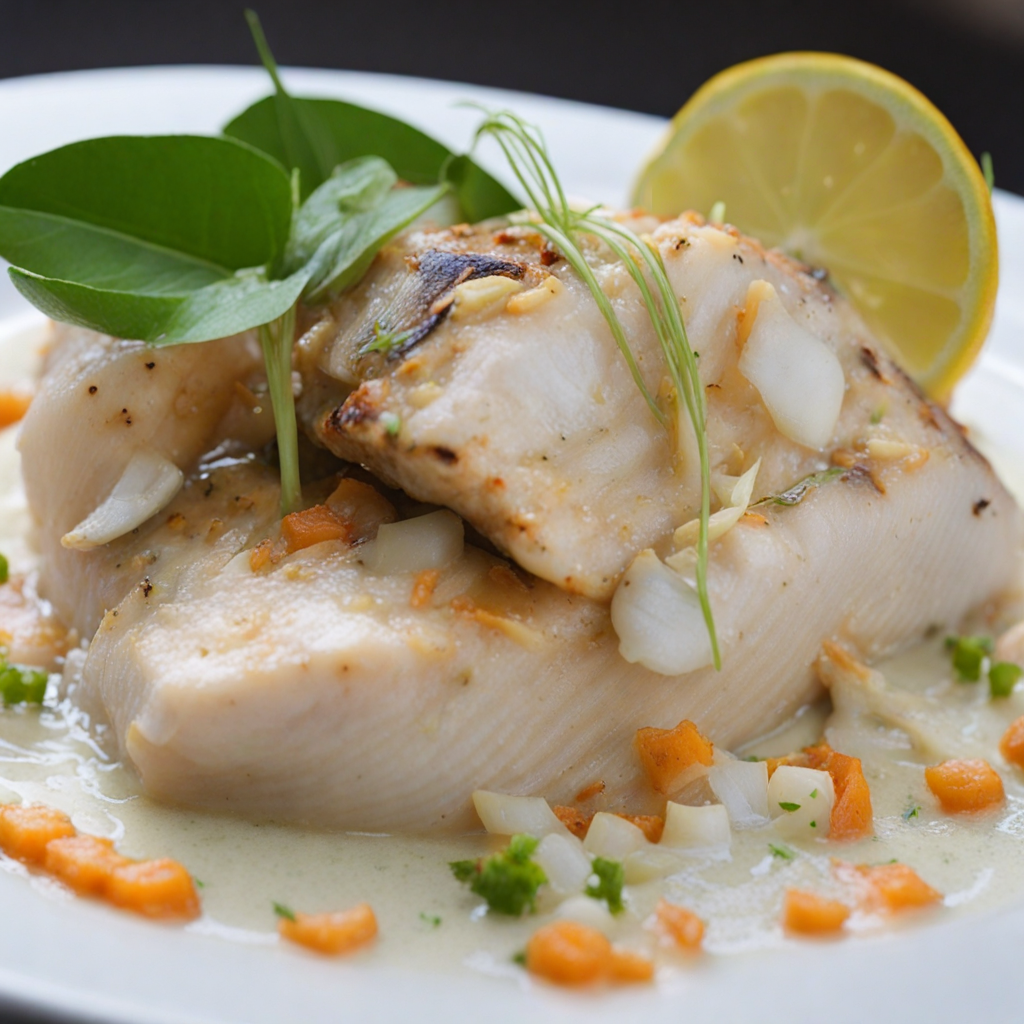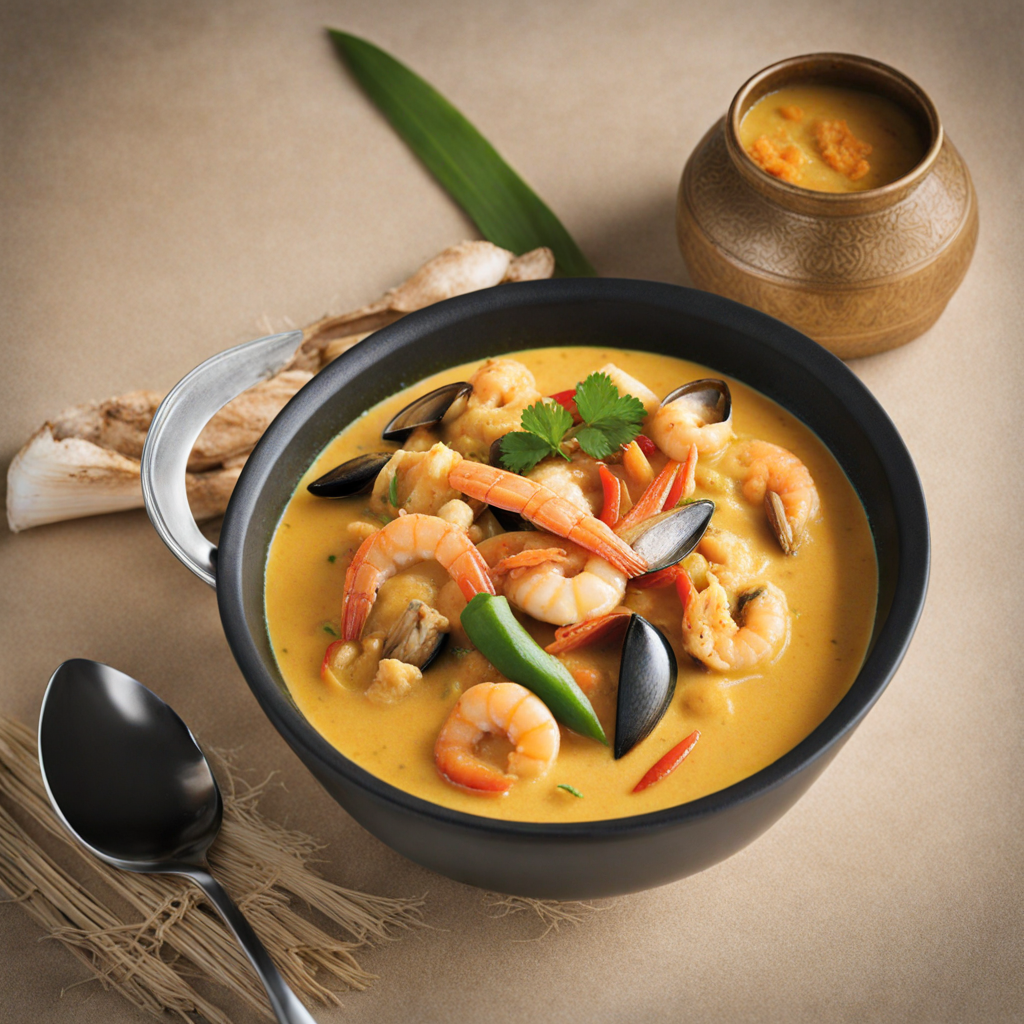Coconut Pudding
Coconut Pudding is a delightful dessert that hails from the picturesque island nation of Tuvalu, where coconuts are a staple ingredient in the local cuisine. This pudding is crafted with the rich, creamy flesh of fresh coconuts combined with coconut milk, creating a velvety texture that melts in your mouth. The pudding is typically sweetened with sugar or a natural sweetener, allowing the inherent flavors of the coconut to shine through. Its simplicity and use of fresh, local ingredients make it a beloved treat among Tuvaluans and an inviting experience for anyone looking to explore new culinary delights. In terms of preparation, Coconut Pudding is often made by combining grated coconut with a blend of coconut milk and cornstarch, which helps to thicken the mixture. This combination is then gently cooked until it reaches a smooth and creamy consistency. Once cooked, the pudding is poured into molds or bowls and left to set, resulting in a delightful dessert that can be served chilled or at room temperature. The final presentation is often adorned with a sprinkle of toasted coconut flakes or a drizzle of additional coconut cream, adding a visual appeal that complements its delectable taste. The flavor profile of Coconut Pudding is a harmonious balance of sweet and creamy, with a subtle nuttiness that comes from the coconut. Each bite offers a comforting sensation, reminiscent of tropical beaches and sun-soaked islands. It is not just a dessert; it captures the essence of Tuvalu's natural bounty and culinary heritage. For those seeking to broaden their taste horizons, Coconut Pudding is a must-try, offering a unique glimpse into the flavors of the Pacific Islands and a delicious way to celebrate the simplicity of coconut in a delightful creamy form.
How It Became This Dish
The History of Pudinga Niu: A Culinary Treasure of Tuvalu #### Origins Pudinga Niu, a traditional dessert from Tuvalu, encapsulates the essence of this small Polynesian nation, which consists of nine islands scattered in the vast expanse of the Pacific Ocean. The word "pudinga" is derived from the English word "pudding," while "niu" means "coconut" in Tuvaluan, highlighting the dish's primary ingredient. This delightful dessert is a testament to the rich cultural tapestry of Tuvalu, where food reflects the islanders' history, environment, and social customs. The origins of Pudinga Niu can be traced back to the early Polynesian settlers who arrived in Tuvalu around 1,000 years ago. These seafaring peoples brought with them an array of agricultural practices and culinary traditions, which included the cultivation of coconuts. The coconut palm, often referred to as the "tree of life," is central to Tuvaluan life, providing food, shelter, and materials for daily living. As the islanders adapted their recipes to the available resources, Pudinga Niu began to take shape, evolving from simple coconut-based dishes into a more refined dessert. #### Ingredients and Preparation Traditionally, Pudinga Niu is made from a combination of grated coconut, flour, sugar, and sometimes pandan leaves, which impart a subtle aroma and color to the dish. The ingredients are mixed to form a batter, which is then steamed in coconut shells or wrapped in banana leaves, giving the pudding its unique texture and flavor. The steaming process preserves the natural moisture of the ingredients while allowing the flavors to meld beautifully. Pudinga Niu is not merely a dessert; it is often prepared for special occasions, celebrations, and communal gatherings, symbolizing hospitality and togetherness. Its preparation is typically a communal activity, where family members come together to create this beloved dish, reinforcing bonds and traditions. #### Cultural Significance In Tuvalu, food is deeply intertwined with cultural identity and social practices. Pudinga Niu holds a special place in the hearts of Tuvaluans as it embodies the spirit of community and celebration. Traditionally served at feasts and significant life events, such as weddings and birthdays, this dessert is a symbol of abundance and generosity. The act of sharing food, particularly a dish as cherished as Pudinga Niu, fosters a sense of belonging and unity among the islanders. Moreover, Pudinga Niu reflects the close relationship Tuvaluans have with the sea and their environment. The reliance on coconuts and other locally sourced ingredients showcases the sustainable practices that have been passed down through generations. It is a reminder of the importance of preserving traditional knowledge and honoring the land that sustains them. #### Development Over Time As globalization and modernization have influenced culinary practices around the world, Pudinga Niu has also evolved. The introduction of new ingredients and cooking techniques has led to variations of this traditional dessert. While the core elements of grated coconut and flour remain, contemporary versions may incorporate flavors such as vanilla or chocolate, appealing to a broader palate. The development of Pudinga Niu is also tied to the changing social landscape of Tuvalu. With the increasing migration of Tuvaluans to other countries, particularly New Zealand and Australia, the dish has found its way into diasporic communities. Here, Pudinga Niu serves as a culinary bridge, connecting Tuvaluans with their homeland while introducing their culture to new audiences. It is often prepared during cultural events and gatherings, allowing younger generations to learn about their heritage through food. The rise of tourism in Tuvalu has also played a role in the dish's evolution. As visitors flock to the islands to experience the rich culture and pristine environment, traditional foods like Pudinga Niu have gained popularity. Local chefs and home cooks are now presenting Pudinga Niu in innovative ways, often combining it with other Pacific flavors or contemporary culinary techniques. This fusion has allowed the dish to maintain its relevance while showcasing Tuvaluan culture on a global stage. #### Preservation of Tradition Despite the pressures of modernization, efforts are underway to preserve the traditional methods of making Pudinga Niu and other cultural practices in Tuvalu. Community workshops and culinary classes are being organized to educate younger generations about the significance of their culinary heritage. These initiatives aim to ensure that the traditional recipes and cooking techniques are passed down, fostering a sense of pride in their cultural identity. In addition, local organizations and cultural institutions are working to document the stories and histories surrounding Pudinga Niu. By sharing these narratives, they aim to highlight the importance of food as a cultural artifact, emphasizing how culinary practices are a reflection of the people and their environment. #### Conclusion Pudinga Niu is more than just a dessert; it is a symbol of Tuvalu's rich cultural heritage and community spirit. Its origins are deeply rooted in the island's history, while its preparation and enjoyment continue to foster connections among families and friends. As Tuvalu navigates the challenges of modernization, Pudinga Niu stands as a testament to the resilience of tradition and the enduring power of food to unite people across generations. Through its journey, Pudinga Niu not only serves as a delicious treat but also as a cultural touchstone, reminding Tuvaluans and the world of the beauty of their culinary traditions. As the dish evolves, it carries with it the stories, memories, and aspirations of the Tuvaluan people, ensuring that this cherished dessert remains a vital part of their cultural landscape for years to come.
You may like
Discover local flavors from Tuvalu


